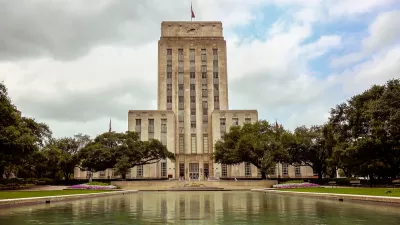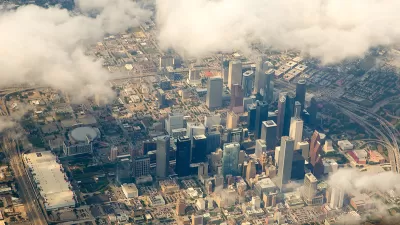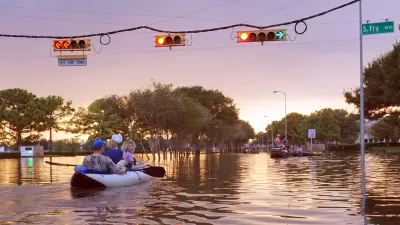Following Hurricane Harvey, Houston's City Hall became flooded with four feet of water, rendering the building's electrical and mechanical equipment useless. Restoring power back to City Hall quickly was crucial in aiding the recovery efforts.

On August 25, Hurricane Harvey slammed into the coast of Texas between the small communities of Port Aransas and Port O’Connor. The Category 4 hurricane was soon downgraded to a tropical storm, but it lingered off the Gulf Coast, breaking regional rainfall records. It soon became apparent that flooding was going to become a serious threat to southeast Texas, and in particular to the city of Houston, the fourth largest city in the United States.
In the early hours of Monday morning, August 28, rainwater runoff from areas to the west of Houston began to engorge Buffalo Bayou, raising the water to record levels. As the bayou continued to rise, it burst its banks and eventually overflowed the flood wall around the City Hall Annex, flooding two levels of parking and reaching the underside of the ground floor structure of the building. From the upper parking level, the water entered the tunnel that connects the annex to the basement of City Hall, flooding the mechanical and electrical equipment rooms to 4 feet.
On the afternoon of August 30, engineers Tom Smith, Hussein Moussa, and Steve Done from Arup’s Houston office responded to a request for help from officials at the City of Houston. Based on mayoral direction, their first goal in the aftermath of the storm was to get the departments based at City Hall and the City Hall Annex up and running again, so that they could start to undertake the essential work of helping Houston to rebuild. Smith and Moussa are embedded with staff from the City’s General Services Department and the contracting team to repair and replace the damaged equipment.
FULL STORY: Up and running: The speedy recovery of Houston’s City Hall

Planetizen Federal Action Tracker
A weekly monitor of how Trump’s orders and actions are impacting planners and planning in America.

Maui's Vacation Rental Debate Turns Ugly
Verbal attacks, misinformation campaigns and fistfights plague a high-stakes debate to convert thousands of vacation rentals into long-term housing.

San Francisco Suspends Traffic Calming Amidst Record Deaths
Citing “a challenging fiscal landscape,” the city will cease the program on the heels of 42 traffic deaths, including 24 pedestrians.

Amtrak Rolls Out New Orleans to Alabama “Mardi Gras” Train
The new service will operate morning and evening departures between Mobile and New Orleans.

The Subversive Car-Free Guide to Trump's Great American Road Trip
Car-free ways to access Chicagoland’s best tourist attractions.

San Antonio and Austin are Fusing Into one Massive Megaregion
The region spanning the two central Texas cities is growing fast, posing challenges for local infrastructure and water supplies.
Urban Design for Planners 1: Software Tools
This six-course series explores essential urban design concepts using open source software and equips planners with the tools they need to participate fully in the urban design process.
Planning for Universal Design
Learn the tools for implementing Universal Design in planning regulations.
Heyer Gruel & Associates PA
JM Goldson LLC
Custer County Colorado
City of Camden Redevelopment Agency
City of Astoria
Transportation Research & Education Center (TREC) at Portland State University
Jefferson Parish Government
Camden Redevelopment Agency
City of Claremont





























